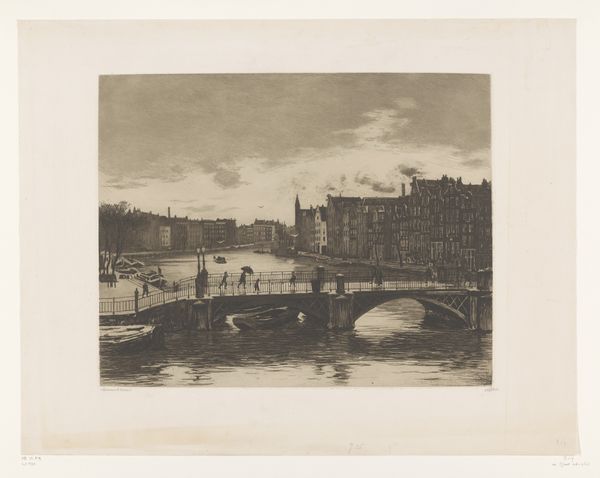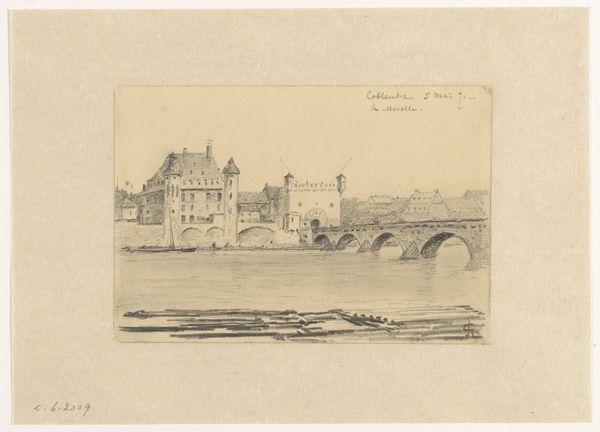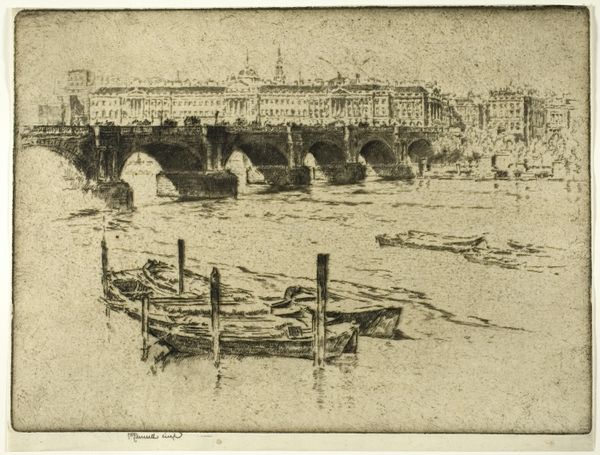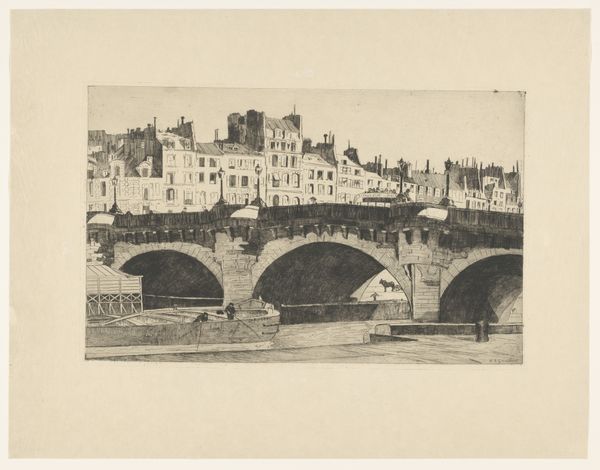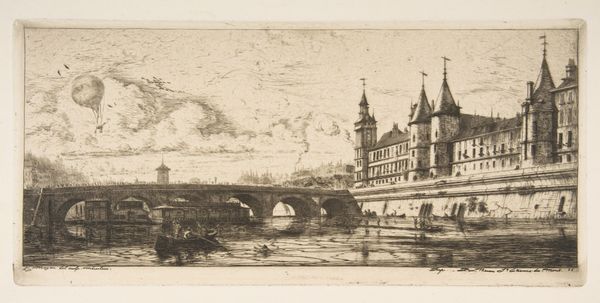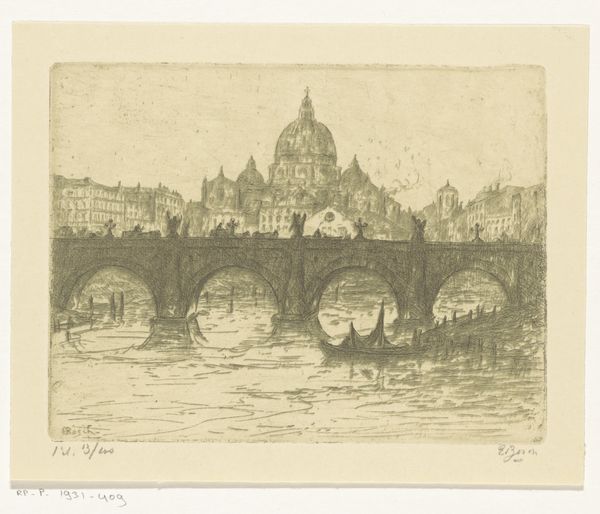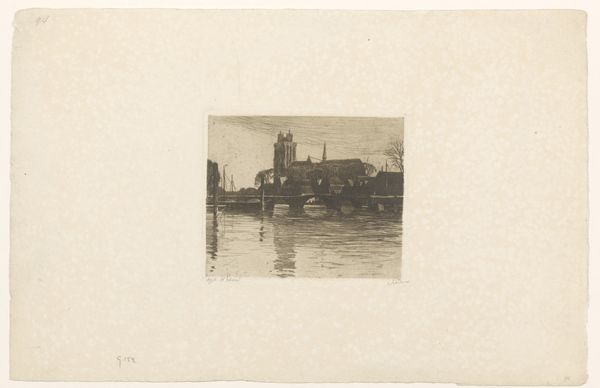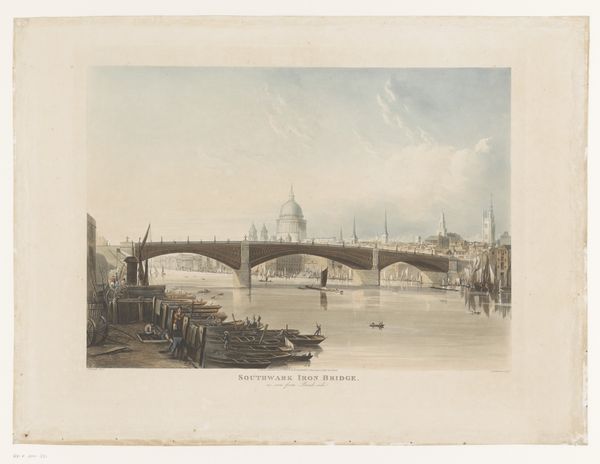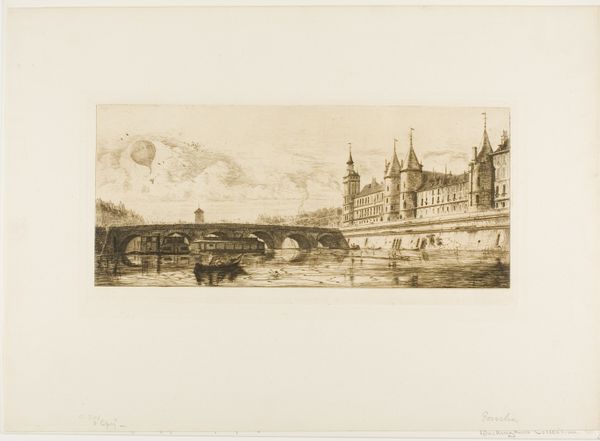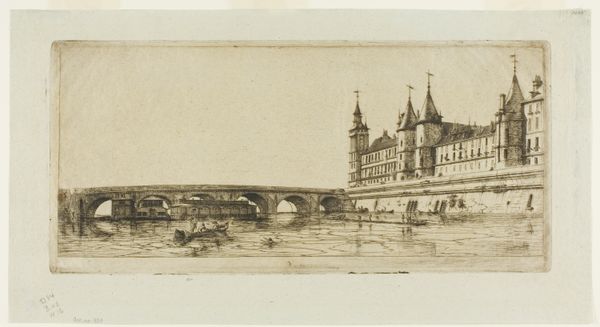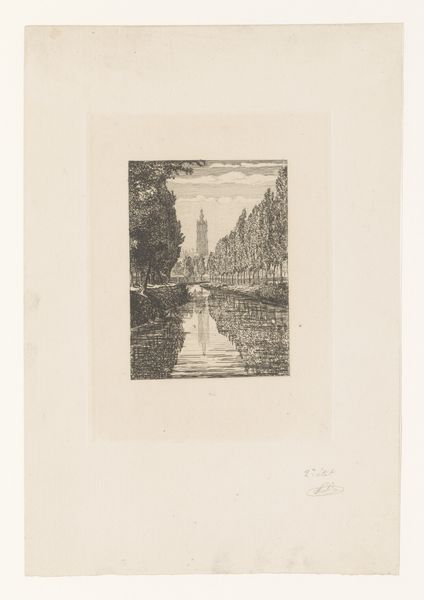
print, etching
# print
#
etching
#
landscape
#
cityscape
#
realism
Dimensions: 4 1/16 x 7 1/4 in. (10.32 x 18.42 cm) (plate)5 13/16 x 11 3/16 in. (14.76 x 28.42 cm) (sheet)
Copyright: Public Domain
Curator: Let's discuss Charles Adams Platt's etching, "Bridge at Saragossa," dating from the 19th century. What strikes you first? Editor: There's a subdued stillness about this scene, a sepia-toned nostalgia. The reflection of the bridge arches in the water adds a touch of dreamy continuity to this urban tableau. Curator: Platt's work reveals a real fascination with structure, both architectural and social. Consider the bridge itself – a feat of engineering and commerce, facilitating the flow of people and goods across the river Ebro. Editor: Absolutely. The bridge is the central motif, almost an emblem of transition and connection, visually dividing the earthly from the divine, reflected in the towering cathedral dominating the city skyline behind. Note the dome, repeated arches in the bridge – it suggests wholeness and cosmic harmony, linking heaven and earth. Curator: Precisely. The technique, etching, itself lends to that symbolic interplay, using acid to corrode lines into a metal plate that then prints an image in reverse. The image isn't just observed; it’s created through industrial chemical activity that mirrors, physically, the symbolic reversals occurring on the surface. Editor: Interesting. The use of etching adds a layer of cultural weight, given the associations with printmaking as a method to widely disseminate ideas. How do you see that function for this work? Is it romanticizing industry? Curator: No, I think Platt uses it to subtly examine progress in a historical moment, but to sentimentalize the process overlooks its place within industry at this time. In a period where bridges and infrastructural construction was remaking European spaces. It is a study of change but also one very literally of manufacture. Editor: The cathedral becomes a counterweight to that narrative then; this architectural and spiritual continuity contrasting against the ephemerality of industrial advance represented in that material process and built object you mention. The dark and light are nearly reversed in the reflection too! It's potent. Curator: Exactly. I leave contemplating both what is seen and what this delicate little material object represents about its own making. Editor: Indeed. It makes you wonder if such structures will exist for future generations to behold or reflect upon in art of their own!
Comments
No comments
Be the first to comment and join the conversation on the ultimate creative platform.


